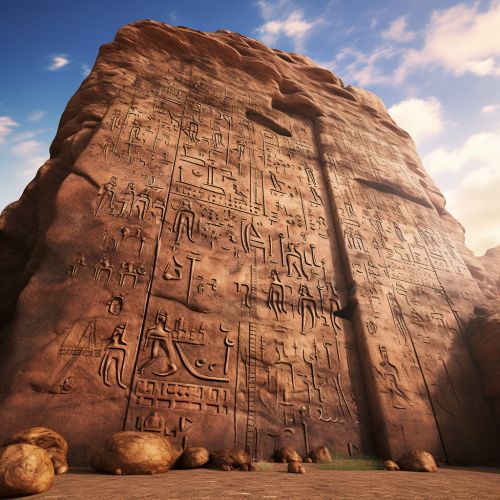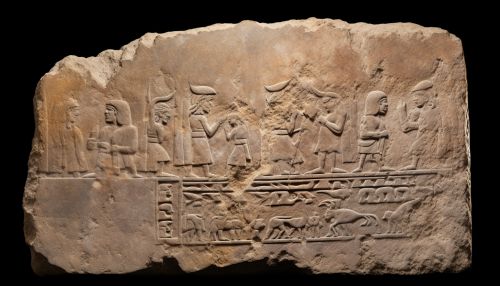Behistun Inscription
Overview
The Behistun Inscription is a multilingual inscription and large rock relief on a cliff at Mount Behistun in the Kermanshah Province of Iran, near the city of Kermanshah in western Iran. It was crucial to the decipherment of cuneiform script as the inscription includes three versions of the same text, written in three different cuneiform script languages: Old Persian, Elamite, and Babylonian.


History
The Behistun Inscription was created approximately in 520 BC, on the orders of Darius the Great, the third Persian King of the Achaemenid Empire. Darius the Great was a significant figure in the history of the Achaemenid Empire, and the inscription provides a detailed account of his ascension to the throne.
Description
The inscription is approximately 15 meters high by 25 meters wide and 100 meters up a limestone cliff from an ancient road connecting the capitals of Babylonia and Media (Babylon and Ecbatana). The monument also features a large bas-relief of Darius I, the Great, holding a bow as a sign of kingship, with his foot on the chest of a figure who lies supine before him.
Significance
The Behistun Inscription is often called the "Rosetta Stone of cuneiform", as its discovery and decipherment has allowed a substantial increase in the understanding of these three cuneiform scripts.
Decipherment
The decipherment of the inscription was a seminal event in the understanding of the development of writing in the ancient world. This process began in earnest in the late 18th century, with the efforts of Sir Henry Rawlinson, a British army officer.
Preservation and Threats
Despite its historical significance, the Behistun Inscription faces several preservation threats, including erosion and vandalism. In 1999, the inscription was added to UNESCO's list of World Heritage Sites, but it remains at risk.
